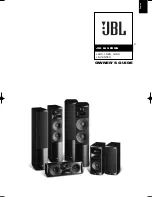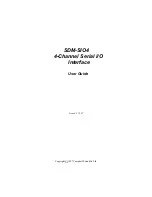
• An icon and color that is used to easily differentiate types of emergency calls.
• The resident and/or suite number the call was placed from.
• The time the call was placed, and duration of the call.
• If using wireless pendants with fingerprinting, the location that pendant was and when the call was placed.
On each line there will also be a close (X) button on the right side of the line to clear the emergency call off of the screen. Calls can
only be cleared off the screen by masters who have access to close calls. And if the call was placed by a locking type of contact (ie.
pull cord) the device must be reset locally first before you will see the close button.
Each line item can also be clicked to show further details about the call. Further details that can be viewed are:
• The “I’ll Handle This” button.
• Exact date and time the call was placed.
• Date and time the call was silenced and the duration of time since the call was placed.
• Date and time the call was reset (for locking type contacts) and the duration of time since the call was placed.
• If using wireless pendants with fingerprinting, the location that pendant was at when the call was placed.
• Resident Photo.
• Resident Phone Number.
• The Location of the call on the facility floor plan.
• Any notes that this resident has in their settings will be displayed.
Whenever an emergency call is displayed on an
AEC200DM
visual master, an emergency tone will also be played on the master. The
tone will play at all masters that are configured to play tones. An icon to silence the tone on all masters will be displayed at the top
of the screen as well. Once that icon is clicked, the tone will stop playing on all masters and the date and time the silence button was
pressed will be stored.
At the bottom of the screen there are three tab icons displayed:
• Calls
- clicking will display all current emergency calls. A badge icon will display on this tab indicating the number of emer
-
gency calls in the list.
•
Alerts
- clicking will display all current devices that need to be checked. See “System Alerts” below on page 9 for more
details. A badge icon will display on this tab indicating the number of devices in the list.
• Info
- clicking will display some information about this master. For example, the version number of the AlphaECall™ 200 soft
-
ware and the IP Address of this master. Other functions on this screen are:
• Call Volume Level
• Screen Cleaning Lock
• Acknowledge Device Alerts
• Shut Down Master
• Reboot Master
»
system alerts
AlphaECall™ 200 is constantly monitoring all devices connected to it. Any devices that are not responding or devices that have an
issue (ie. low battery) that needs to be addressed will be displayed in the alerts list. If the item in the list is something that is crit
-
ical and needs to be addressed right away, the emergency tone on the master(s) will play and the badge count on the Alerts icon
will flash. For example, if the
TL333
Translator or the
WNC510
Wireless Network coordinator that is connected to a master is not
responding, this is considered critical because no emergency calls will be able to be received into that device. However if an apart
-
ment device is not responding or needs a new battery this is not considered critical, but it is something that should be addressed as
soon as possible, because if an emergency call is placed from that location it may not get through to a master.
Once a device is responding properly to AlphaECall™ 200 then it will be automatically removed from the Alerts list.
9
Summary of Contents for AEC200DM
Page 16: ...EPS339 Mushroom Button Emergency Push Switch EPS156 Code Blue Push Pull Switch 16...
Page 17: ...VSS110 Staff Station VPS101 VPS102 Patient Bed Stations 17...
Page 38: ...Figure RL 3 Arrange repeaters in triangle patterns to promote signal strength 38...
Page 39: ...Figure RL 4 Offset triangles from floor to floor for maximum signal strength efficiency 39...
Page 42: ...Figure RL 5 The Compass Method of Fingerprinting 42...










































